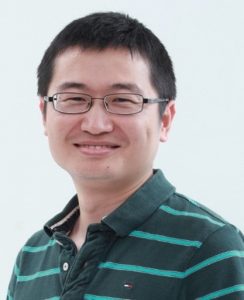
The Reasonable Effectiveness of Graph Neural Networks for Wireless Communications
(09:00 – 10:00, Sep 16)
Abstract:Deep learning techniques have been recently applied to solve various challenging problems in wireless communications. The effectiveness of such approaches highly depends on the neural network architecture. Early attempts adopted architectures inherited from such applications as computer vision, e.g., multi-layer perceptrons (MLPs) and convolutional neural networks (CNNs). Unfortunately, methods based on these classic architectures often require huge amounts of training samples (i.e., poor generalization), and yield poor performance in large-scale networks (i.e., poor scalability). This talk will introduce the graph neural network (GNN) as a promising neural architecture to solve generic design problems in wireless communications. It will present a theoretical analysis to quantify the performance gains of GNNs over unstructured neural networks, in terms of generalization performance and sample complexity. Moreover, effective design guidelines for the GNN architecture will also be presented, accompanied with various examples. Video, Slide
Jun Zhang received his Ph.D. degree in Electrical and Computer Engineering from the University of Texas at Austin. He is an Associate Professor in the Department of Electronic and Computer Engineering at the Hong Kong University of Science and Technology. His research interests include wireless communications and networking, mobile edge computing and edge AI, and cooperative AI. Dr. Zhang co-authored the book Fundamentals of LTE (Prentice-Hall, 2010). He is a co-recipient of several best paper awards, including the 2021 Best Survey Paper Award of IEEE Communications Society, the 2019 IEEE Communications Society & Information Theory Society Joint Paper Award, and the 2016 Marconi Prize Paper Award in Wireless Communications. Two papers he co-authored received the Young Author Best Paper Award of the IEEE Signal Processing Society in 2016 and 2018, respectively. He also received the 2016 IEEE ComSoc Asia-Pacific Best Young Researcher Award. He is an Editor of IEEE Transactions on Communications, and was an editor of IEEE Transactions on Wireless Communications (2015-2020). He served as a MAC track co-chair for IEEE Wireless Communications and Networking Conference (WCNC) 2011 and a wireless communications symposium co-chair of IEEE International Conference on Communications (ICC) 2021. He is an IEEE Fellow.
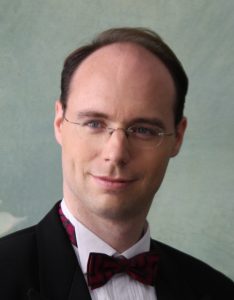
Rate-Splitting Multiple Access for 6G (10:00 – 11:00, Sep 16)
Abstract: Rate-Splitting Multiple Access (RSMA), based on (linearly or nonlinearly) precoded Rate-Splitting (RS) at the transmitter and Successive Interference Cancellation (SIC) at the receivers, has emerged as a novel, general and powerful framework for the design and optimization of non-orthogonal transmission, multiple access, and interference management strategies in future MIMO wireless networks. RSMA relies on the split of messages and the non-orthogonal transmission of common messages decoded by multiple users, and private messages decoded by their corresponding users. This enables RSMA to softly bridge and therefore reconcile the two extreme strategies of fully decode interference and treat interference as noise. RSMA has been shown to generalize, and subsume as special cases, four seemingly different strategies, namely Space Division Multiple Access (SDMA) based on linear precoding (currently used in 5G), Orthogonal Multiple Access (OMA), Non-Orthogonal Multiple Access (NOMA) based on linearly precoded superposition coding with SIC, and physical-layer multicasting. RSMA boils down to those strategies in some specific conditions, but outperforms them all in general. Through information and communication theoretic analysis, RSMA is shown to be optimal (from a Degrees-of-Freedom region perspective) in a number of scenarios and provides significant room for spectral efficiency, energy efficiency, fairness, reliability, QoS enhancements in a wide range of network loads and user deployments, robustness against imperfect Channel State Information at the Transmitter (CSIT), as well as feedback overhead and complexity reduction over conventional strategies used in 5G. The benefits of RSMA have been demonstrated in a wide range of scenarios (MU-MIMO, massive MIMO, multi-cell/cell-free MIMO/CoMP, overloaded systems, NOMA, multigroup multicasting, mmwave communications, communications in the presence of RF impairments, superimposed unicast and multicast transmission, relay, reconfigurable intelligent surfaces, etc), systems (terrestrial, cellular, satellite, …), and functionalities (integration of communication, sensing, power transfer, etc). Thanks to its versatility, RSMA has the potential to tackle challenges of modern communication systems and is a gold mine of research problems for academia and industry, spanning fundamental limits, optimization, PHY and MAC layers, and standardization. This lecture will share key principles of RSMA, recent developments, emerging applications and opportunities of RSMA for 6G networks and will cover some of the topics currently investigated as part of the new IEEE special interest group on RSMA https://sites.google.com/view/ieee-comsoc-wtc-sig-rsma/home. Video, Slide
Bruno Clerckx is a Professor, the Head of the Wireless Communications and Signal Processing Lab, and the Deputy Head of the Communications and Signal Processing Group, within the Electrical and Electronic Engineering Department, Imperial College London, London, U.K. He received the MSc and Ph.D. degrees in Electrical Engineering from Université Catholique de Louvain, Belgium, and the Doctor of Science (DSc) degree from Imperial College London, U.K. From 2006 to 2011, he was with Samsung Electronics, Korea. Since 2011, he has been with Imperial College London. He also held various short- and long-term appointments at various institutions around the world. He has authored two books on “MIMO Wireless Communications” and “MIMO Wireless Networks”, 250 peer-reviewed international research papers, and 150 standards contributions, and is the inventor of 80 issued or pending patents. His research spans the general area of wireless communications and signal processing for wireless networks. He was an Elected Member of the IEEE Signal Processing Society “Signal Processing for Communications and Networking” (SPCOM) Technical Committee. He served as an Editor for the IEEE TRANSACTIONS ON COMMUNICATIONS, the IEEE TRANSACTIONS ON WIRELESS COMMUNICATIONS, and the IEEE TRANSACTIONS ON SIGNAL PROCESSING. He has also been a (lead) guest editor for special issues of the EURASIP Journal on Wireless Communications and Networking, IEEE ACCESS, the IEEE JOURNAL ON SELECTED AREAS IN COMMUNICATIONS, the IEEE JOURNAL OF SELECTED TOPICS IN SIGNAL PROCESSING, and the PROCEEDINGS OF THE IEEE. He was an Editor for the 3GPP LTE-Advanced Standard Technical Report on CoMP. He received the prestigious Blondel Medal 2021 from France for exceptional work contributing to the progress of Science and Electrical and Electronic Industries, multiple awards from Samsung, IEEE best student paper award, and the EURASIP (European Association for Signal Processing) best paper award 2022. He is a Fellow of the IEEE and the IET, and an IEEE Communications Society Distinguished Lecturer 2021-2022.
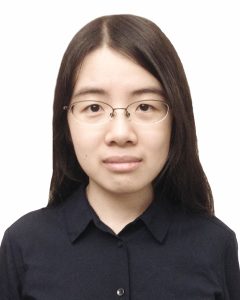
Capacity Characterization for Intelligent Reflecting Surface Aided Wireless Communication
(11:00 – 12:00, Sep 16)
Abstract: Intelligent reflecting surface (IRS) is a new promising technology to increase the data rate of future wireless communication systems. Specifically, an IRS is a planar meta-surface consisting of a large number of passive reflecting elements, each being able to introduce an independent phase shift to the incident signal. By properly designing these phase shifts, the wireless channel can be smartly reconfigured to be more favorable for communication. In this talk, we will characterize the fundamental capacity limits of various IRS-aided communication channels, in order to unveil the maximum capacity gain offered by the IRS via tuning the channel. First, we will consider the IRS-aided multiple-input multiple-output (MIMO) channel, and investigate the capacity maximization problem by jointly optimizing the IRS phase shifts and the transmit covariance matrix. Despite the non-convexity of the problem and the challenging unit-modulus constraints, we derive the optimal solution to each IRS phase shift in closed-form, thus yielding an efficient alternating optimization (AO) algorithm for finding a locally optimal solution. Then, we will extend the AO algorithm to the IRS-aided MIMO-OFDM (orthogonal frequency division multiplexing) system under frequency-selective fading channels. Numerical results show that proper design of the IRS phase shifts leads to substantial capacity gain which increases with the number of IRS elements. Moreover, various key parameters of the MIMO channel can also be improved via the IRS, such as the rank, condition number, and channel power. Next, we will consider the IRS-aided multiple-access channel (MAC) and broadcast channel (BC). We propose two practical strategies to deploy a given number of IRS elements, which lead to different effective user channels: distributed deployment where the elements form multiple IRSs, each deployed near one user, and centralized deployment where all the elements form one IRS deployed near the access point (AP). We establish a rate-profile based framework to characterize the capacity regions under the two deployment strategies. It is analytically proved that for two-user MAC/BC, the capacity region with a centralized IRS contains that with distributed IRSs under a symmetric channel setup, while both IRS deployment strategies are able to achieve enlarged capacity regions over conventional MAC/BC without the IRS. Video, Slide
Shuowen Zhang is currently an Assistant Professor with the Department of Electronic and Information Engineering, The Hong Kong Polytechnic University (PolyU). She obtained her Ph.D. degree from the NUS Graduate School for Integrative Sciences and Engineering, National University of Singapore, in January 2018, and her B.Eng. degree from the Chien-Shiung Wu Honors College, Southeast University, in June 2013. Prior to joining PolyU, she has been a Research Fellow with the Department of Electrical and Computer Engineering, National University of Singapore, from 2017 to 2020. Dr. Zhang’s research interests include wireless communications, internet-of-things (IoT), communication theory, and optimization methods, with a recent focus on intelligent reflecting surface (IRS) aided communications, unmanned aerial vehicle (UAV) communications, and integrated sensing and communication. She has served as a Guest Editor for several journals including the IEEE Journal on Selected Areas in Communications. Dr. Zhang is the sole recipient of the Marconi Society Paul Baran Young Scholar Award, 2021, and recipient of the IEEE Communications Society Young Author Best Paper Award, 2022.
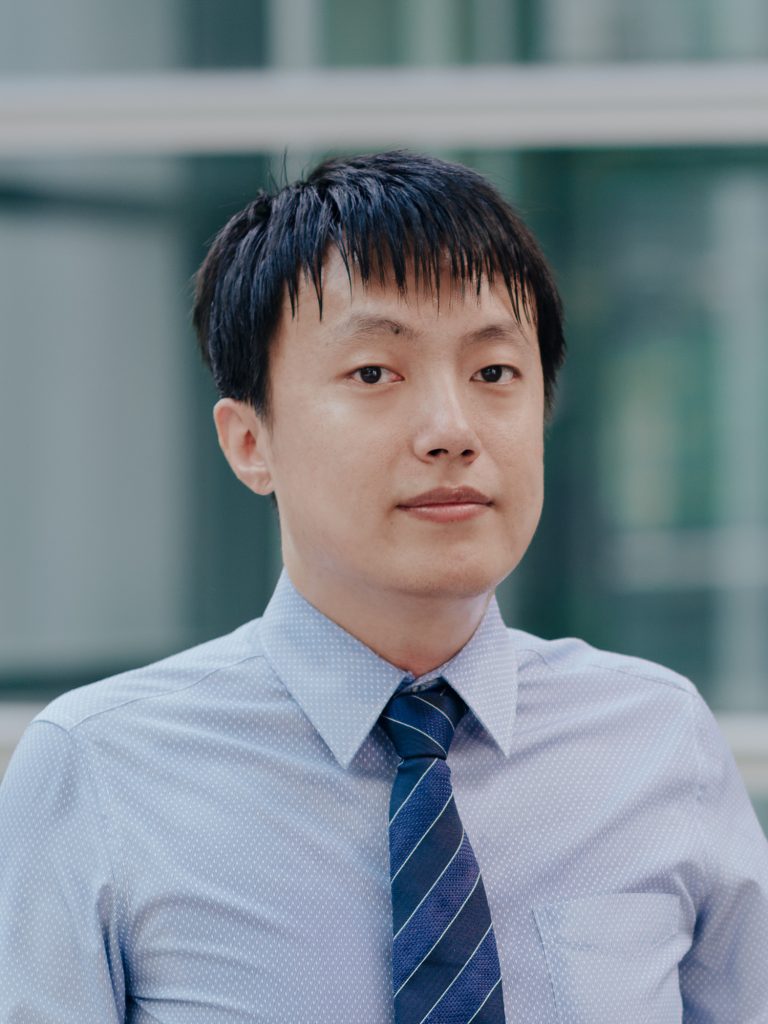
Networked Device-Free Sensing for 6G (14:00 – 15:00, Sep 16)
Abstract: Radar and wireless communication are widely acknowledged as the two most successful applications of the radio technology over the past decades. Recently, there is a trend in both academia and industry to achieve integrated sensing and communication (ISAC) in one system via utilizing a common radio spectrum and the same hardware platform. This talk will discuss the possibility of exploiting the future sixth-generation (6G) cellular network to realize ISAC. Our vision is to transform the cellular network deployed all over the world into a powerful sensor such that applications arising from autonomous cars, collaborative robots, etc., can enjoy the high-resolution sensing services provided by the 6G technique. Specifically, motivated by the joint encoding/decoding gain in multi-cell coordinated communication, we will first advocate the adoption of the base station (BS) cooperation based networked sensing technique in 6G network, where the BSs can share their obtained range/angle/Doppler information with each other for jointly localizing the targets. In particular, we will show some exiting results about data association under this framework. Next, to enhance the anchor density for high joint sensing gain, we will devise a heterogeneous networked sensing architecture consisting of both the active BSs and the passive intelligent reflecting surfaces (IRSs), because a large number of IRSs can be densely deployed in practice at known locations. Under this framework, we will propose a novel method to estimate the distance between each passive IRS and each passive targets when both of them cannot emit/decode the wireless signals. Some future research directions about 6G-enabled networked sensing will be discussed as well. Video, Slide
Liang Liu received the B.Eng. degree from the School of Electronic and Information Engineering at Tianjin University in 2010, and the Ph.D. degree from the Department of Electrical and Computer Engineering at National University of Singapore (NUS) in 2014. He was a postdoctoral fellow at University of Toronto from 2015 to 2017, and a research fellow at NUS from 2017 to 2019. Currently, he is an assistant professor in the Department of Electronic and Information Engineering at The Hong Kong Polytechnic University (PolyU). His research interests include wireless communications and networking, advanced signal processing and optimization techniques, and Internet-of-Things (IoT). Dr. Liang LIU is the recipient of the 2021 IEEE Signal Processing Society Best Paper Award, the 2017 IEEE Signal Processing Society Young Author Best Paper Award, the Best Student Paper Award for 2022 IEEE International Conference on Acoustics, Speech and Signal Processing (ICASSP), and the Best Paper Award for 2011 International Conference on Wireless Communications and Signal Processing (WCSP). He was listed in Highly Cited Researchers, also known as World’s Most Influential Scientific Minds, by Clarivate Analytics (Thomson Reuters) in 2018. He is an editor for IEEE Transactions on Wireless Communications, and was a leading guest editor for IEEE Wireless Communications special issue on “Massive Machine-Type Communications for IoT”.
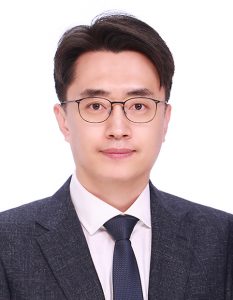
Biological Layer for 6G: Einstein, Reynolds, and Communications (15:00 – 16:00, Sep 16)
Abstract: Nano-molecular communication represents, in terms of its scale and energy consumption, a very powerful future communication system. Though nano communication can also be realised with electromagnetic waves, as in traditional communication systems, such means still pose several problems, such as the development of nano-scale actuator, antennas, or body absorption of tera-Hertz band frequency. Nano-molecular, or molecular communication, however, can utilise intra-body biomolecules that enable a great deal of various applications. As research into this field has been underway for less than a decade, it calls for fundamental intellectual challenges through preliminary studies. In this talk, we will introduce the contributions of Einstein and Reynolds and explain how they contribute for communications, especially for a biological layer of 6G/B6G. Video, Slide
Chan-Byoung Chae is an Underwood Distinguished Professor in the School of Integrated Technology, Yonsei University, Korea. He was with the Department of Electrical Engineering, Stanford University, CA, USA as a Visiting Associate Professor in 2017. He was a Member of Technical Staff (Research Scientist) at Bell Laboratories, Alcatel-Lucent, Murray Hill, NJ, USA from June 2009 to Feb 2011. Before joining Bell Laboratories, he was with the School of Engineering and Applied Sciences at Harvard University, Cambridge, MA, USA as a Post-Doctoral Research Fellow. He received the Ph.D. degree in Electrical and Computer Engineering from The University of Texas (UT), Austin, TX, USA in 2008.
He is now an Editor-in-Chief of the the IEEE Transactions on Molecular, Biological, and Multi-scale Communications. He has served/serves as an Editor for the IEEE Communications Magazine (2016-present), the IEEE Transactions on Wireless Communications (2012-2017), the IEEE Transactions on Molecular, Biological, and Multi-scale Comm. (2015-present), the IEEE Wireless Communications Letters (2016-present), the IEEE Transactions on Smart Grid (2010-2011), the IEEE ComSoc Technology News (2014), and the IEEE/KICS Journal of Communications and Networks (2012-present). He has been a Guest Editor for the IEEE Journal on Selected Areas in Communications (special issue on molecular, biological, and multi-scale communications) 2014-2015 and the IEEE Access (special section on molecular communication networks). He is an IEEE Distinguished Lecturer (ComSoc) and an IEEE Fellow.
Chan-Byoung was the recipient/co-recipient of the IEEE ICC Best Demo Award in 2022, the IEEE WCNC Best Demo Award in 2020, the Best Young Engineer Award from the National Academy of Engineering of Korea (NAEK) in 2019, the IEEE DySPAN Best Demo Award in 2018, the IEEE/KICS Journal of Communications Networks Best Paper Award in 2018, the IEEE INFOCOM Best Demo Award in 2015, the IEIE/IEEE Joint Award for Young IT Engineer of the Year in 2014, the KICS Haedong Young Scholar Award in 2013, the IEEE Signal Processing Magazine Best Paper Award in 2013, the IEEE ComSoc AP Outstanding Young Researcher Award in 2012, and the IEEE VTS Dan. E. Noble Fellowship Award in 2008.
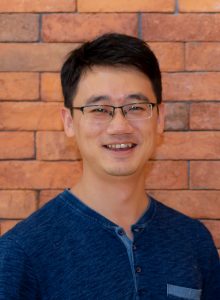
Five Challenging Problems in Theory for Future Wireless Communications (16:00 – 17:00, Sep 16)
Abstract: In this talk, we will present five challenging problems for future wireless communications theory. Enhanced Mobile Broadband (eMBB), massive Machine Type Communication (mMTC) and ultra-Reliable Low Latency Communication (uRLLC) are three key scenarios in 5G and beyond. Centered around these key scenarios, we propose three theoretical problems: 1) user-perceived throughput optimization, 2) synchronization and HARQ for massive random access, and 3) link adaption for URLLC. Due to channel uncertainty and implementation constraints, optimal decoder cannot always be used which causes significant performance loss. We will also discuss 4) the design of mismatched decoder and performance bound. Moreover, we will also explore 5) the near-field DoF in massive-MIMO and discuss the way to exploit it. Video
Wei Han received the B.S. degree from Tsinghua University in 2011 and the Ph.D. degree from the Hong Kong University of Science and Technology (HKUST) in 2018. He is currently a senior researcher and leads the information theory group in the Theory Lab, Central Research Institute, 2012 Labs, Huawei Tech. Investment Co., Ltd., Hong Kong. His research interests include wireless communications and information theory. He is experienced in mathematical modelling and implementing theory into commercial products.
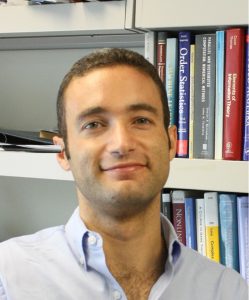
Reliable AI for Communications: Algorithms and Enabling Technologies (17:00 – 18:00, Sep 16)
Abstract: This talk discusses algorithms and enabling technologies for the implementation of reliable AI solutions, with a focus on communication systems. Well-calibrated AI models produce decisions along with faithful estimates of their uncertainty, offering reliable actionable intelligence. Key definitions are first provided, and it is then demonstrated that Bayesian learning offers significant advantages over standard deep learning in terms of calibration. Robust variants of Bayesian learning are also covered that can operate in the presence of outliers and model misspecification. Finally, it is argued that neuromorphic computing and quantum computing provide promising platforms for the deployment of well-calibrated AI algorithms at the edge. Video, Slide
Osvaldo Simeone is a Professor of Information Engineering with the Centre for Telecommunications Research at the Department of Engineering of King’s College London, where he directs the King’s Communications, Learning and Information Processing lab. He received an M.Sc. degree (with honors) and a Ph.D. degree in information engineering from Politecnico di Milano, Milan, Italy, in 2001 and 2005, respectively. From 2006 to 2017, he was a faculty member of the Electrical and Computer Engineering (ECE) Department at New Jersey Institute of Technology (NJIT), where he was affiliated with the Center for Wireless Information Processing (CWiP). His research interests include information theory, machine learning, wireless communications, neuromorphic computing, and quantum machine learning. Dr Simeone is a co-recipient of the 2022 IEEE Communications Society Outstanding Paper Award, the 2021 IEEE Vehicular Technology Society Jack Neubauer Memorial Award, the 2019 IEEE Communication Society Best Tutorial Paper Award, the 2018 IEEE Signal Processing Best Paper Award, the 2017 JCN Best Paper Award, the 2015 IEEE Communication Society Best Tutorial Paper Award and of the Best Paper Awards of IEEE SPAWC 2007 and IEEE WRECOM 2007. He was awarded a Consolidator grant by the European Research Council (ERC) in 2016. His research has been also supported by the U.S. National Science Foundation, the Vienna Science and Technology Fund, the European Space Agency, as well as by a number of industrial collaborations including with Intel Labs and InterDigital. He is the Chair of the Signal Processing for Communications and Networking Technical Committee of the IEEE Signal Processing Society and of the UK & Ireland Chapter of the IEEE Information Theory Society. He is currently a Distinguished Lecturer of the IEEE Communications Society, and he was a Distinguished Lecturer of the IEEE Information Theory Society in 2017 and 2018. Dr Simeone is the author of the textbook “Machine Learning for Engineers” to be published by Cambridge University Press, three monographs, two edited books, and more than 170 research journal and magazine papers. He is a Fellow of the IET and of the IEEE.
